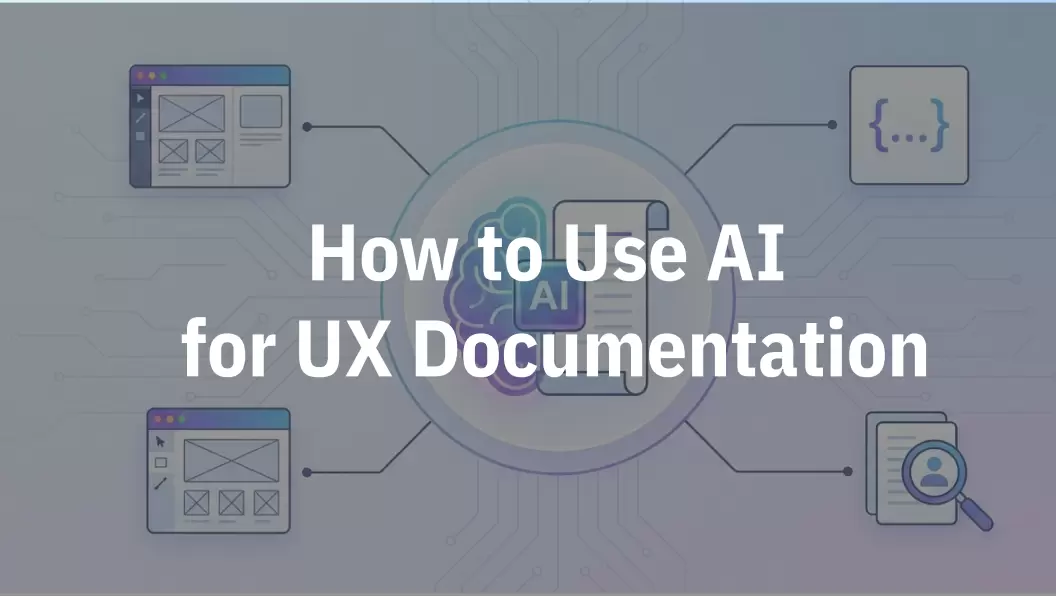Chatbots are becoming a new norm for customer service across industries. Almost 90% of customer queries are resolved in up to 10 or fewer messages with chatbots. Secondly, 74% of users now prefer using chatbots for simple questions.
Healthcare is no exception for chatbots. Today, there are plenty of healthcare chatbot use cases in action. Medical institutes/facilities are deploying chatbots to assist patients in scheduling appointments, answering their queries, sending reminders, and more. Therefore, this guide will thoroughly look into the use cases of healthcare chatbots so that you can also maximize their use in your facility.
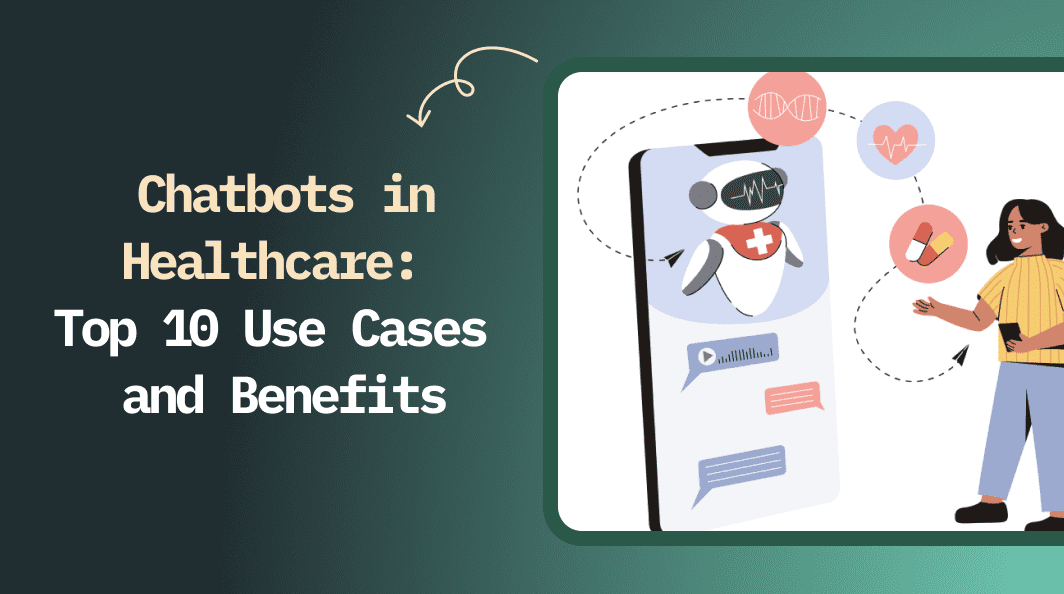
Part 1: What are the benefits of healthcare chatbots?
Healthcare chatbots are like virtual assistants that help patients get faster assistance. They provide an easy channel for patients to solve their queries on their own.
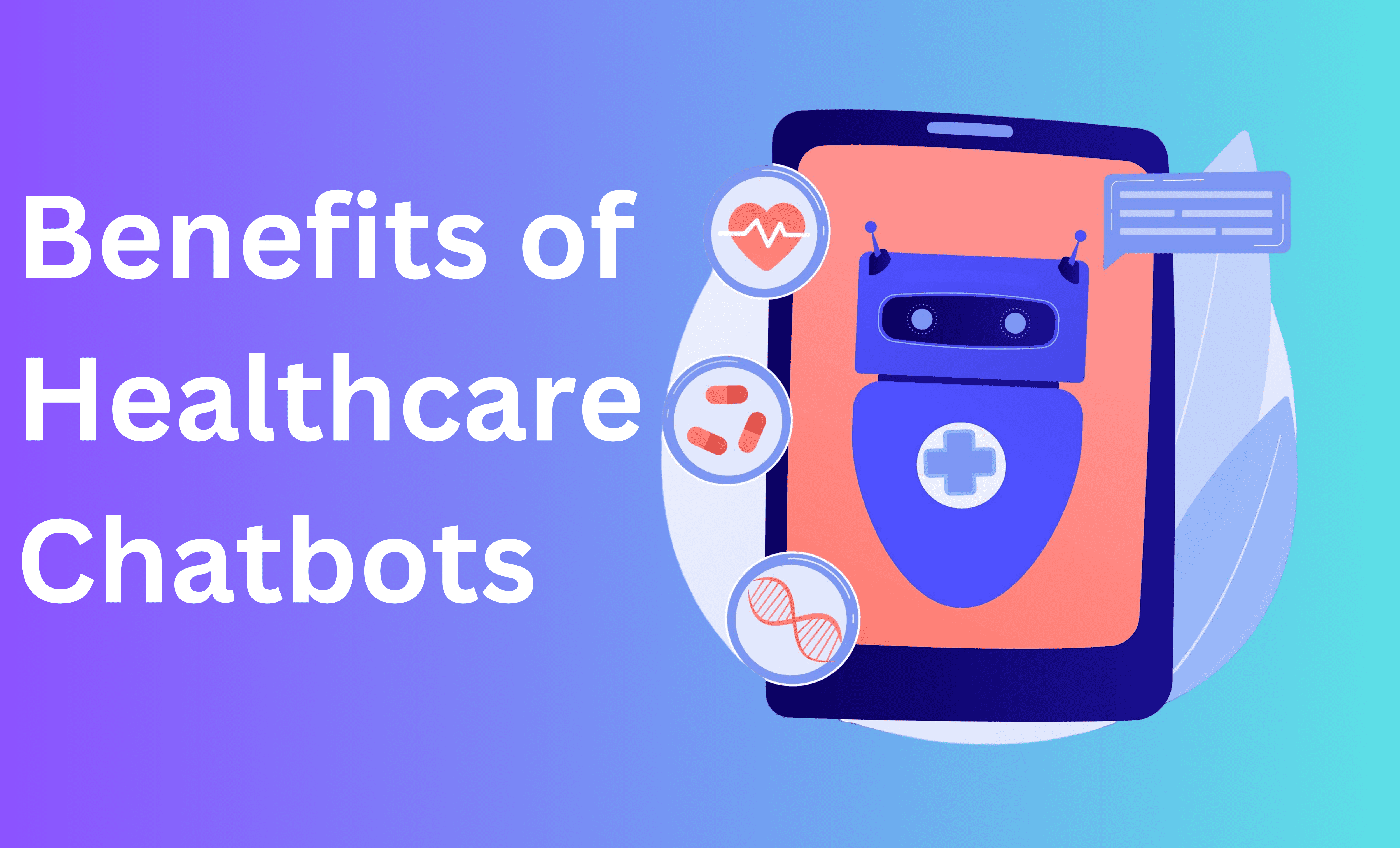
Some of the key benefits of chatbots in healthcare are as follows:
- 24/7 Fast Responses: Chatbots are available 24/7. Patients simply have to access the chatbot, send a message, and get a response instantly. There is no wait time or delayed response, which is common when contacting the human support team.
- Cost Savings: Chatbots can save significant costs for healthcare services. They can automate repetitive tasks and reduce the burden on human support teams. This reduces the need for a large support team and saves in-house resources. In 2022 alone, healthcare chatbots saved $3.6 billion, and the figure will continue to grow with every passing year.
- Better Patient Engagement: Chatbots can engage patients with personalized communication. They not only act as information hubs but also create an interactive environment. When patients can answer their queries, get better treatment plans, and receive encouragement for lifestyle changes, it builds a deeper connection between the healthcare service and patients.
- Anonymity: Many patients tend to keep their health information confidential. Healthcare chatbots are virtual agents that provide patients the anonymity they need through non-judgmental responses.
- Health Education: Chatbots provide simple and personalized information to patients about their symptoms, diseases, treatments, and more. This facilitates them in making the right health decisions and having a proactive approach to their healthcare.
- Triage Tool: Chatbots act as triage tools in healthcare. They assess patients' symptoms and medical histories to guide them about the right treatment. The healthcare facility can better sort patients and manage their flow based on their severity scenarios.
- Data-Driven Decisions: Chatbots also provide useful data and insights about patients, trends, and more. The insights are then used to make data-driven decisions and optimize the services accordingly.
- Scalability: Chatbots can handle more queries as the patient count increases. Instead of needing more human workforce, chatbots can handle more patients simultaneously and provide them with timely assistance.
All the above benefits of chatbots in healthcare reflect the necessity of deploying them in today's digitalized era. So, let's now discuss the healthcare chatbot use cases and then how to build one.
Part 2: 10 Healthcare Chatbot Use Cases
Healthcare chatbots play a central role in modern healthcare and are even considered necessary to fulfill patients' expectations and remain competitive. Therefore, below are the top 10 healthcare chatbot use cases you must know about:
1. Appointment Scheduling and Management
Appointment scheduling is one of the most tedious tasks in the medical world. However, the healthcare chatbot makes it autonomous without human intervention. It can schedule an appointment according to the patient's preferred date and time. All it requires is a simple chat to schedule the appointment within seconds. Secondly, the chatbot can also assist in canceling and rescheduling appointments.
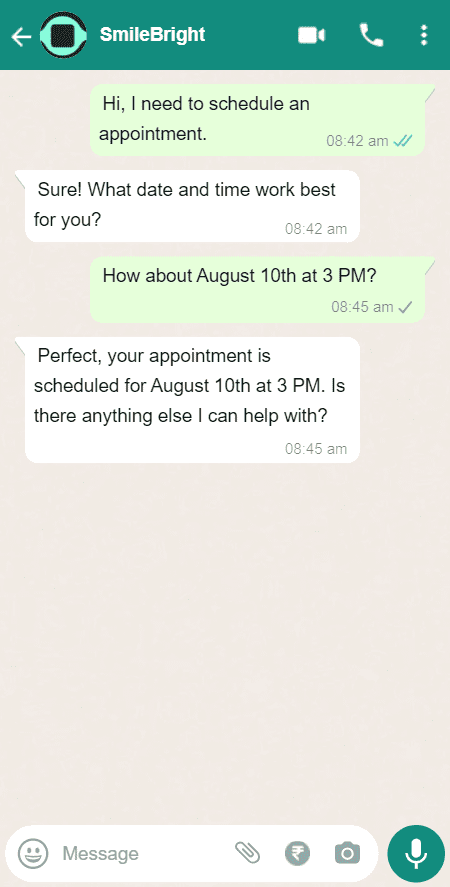
2. Symptom Assessment
Patients often want to diagnose their symptoms themselves before consulting a doctor. A healthcare chatbot can provide an initial symptom assessment. It can assess the patient's symptoms by asking a series of questions and then listing potential diagnoses. This way, patients can avoid unnecessary doctor visits or immediately consult the doctor if things look serious.
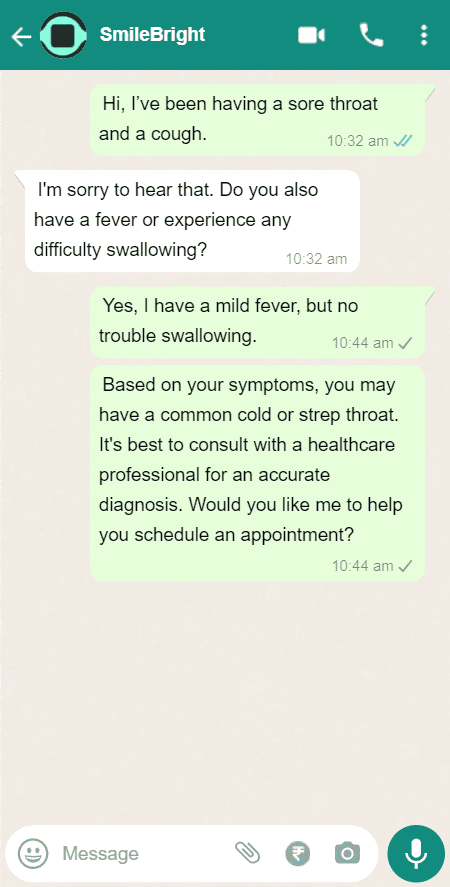
3. Answering Questions (FAQs, Medication, etc.)
Patients often have many questions related to health, medication, and more. So, one of the most common healthcare chatbot use cases is to answer general questions, medication-related queries, pre- and post-treatment care, and similar others. For example, the questions can be about “Is aspirin useful to treat cold”, “What are the side effects of taking the Augmenting tablet”, “What are the precaution tips after root canal”, and similar others. This way, the medical facility will receive fewer calls about such questions, as the chatbot will deal with them autonomously.
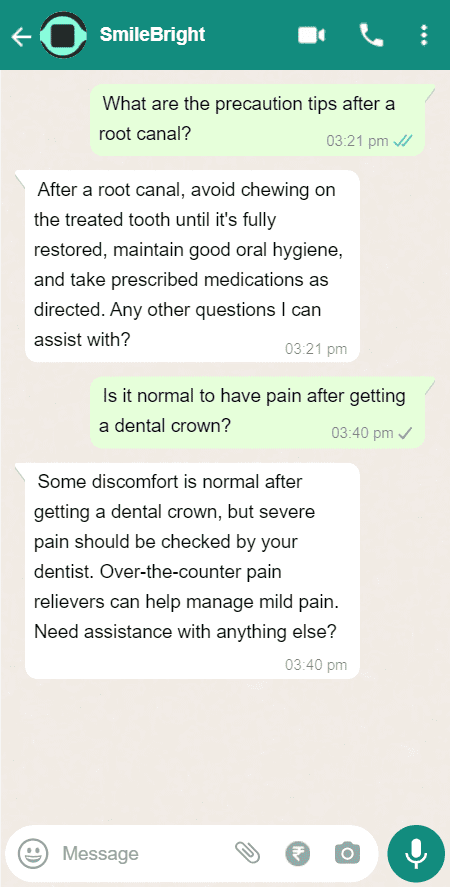
4. Update on Lab Reports
A healthcare chatbot makes it easy to track lab results. The chatbot can automatically send the lab results to the patient or provide them when the patient requests. This makes it easy to get lab results and begin the needed care timely. Secondly, it also lowers the administrative costs.
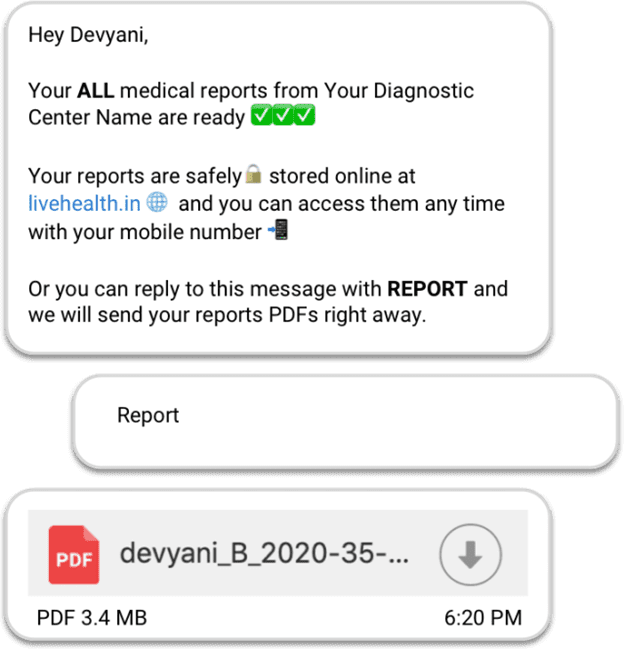
5. Managing Insurance Queries
A healthcare chatbot can also answer insurance-related queries. It can provide answers related to the policy, coverage range, claim filing, claim tracking, and more. This makes it easy to navigate through insurance-related queries.

6. Automated Reminders
Another use case of a healthcare chatbot is sending reminders automatically. It can send reminders for medication so that patients follow the prescribed treatment effectively. Secondly, it can also send reminders about vaccination, prescription refills, and more.
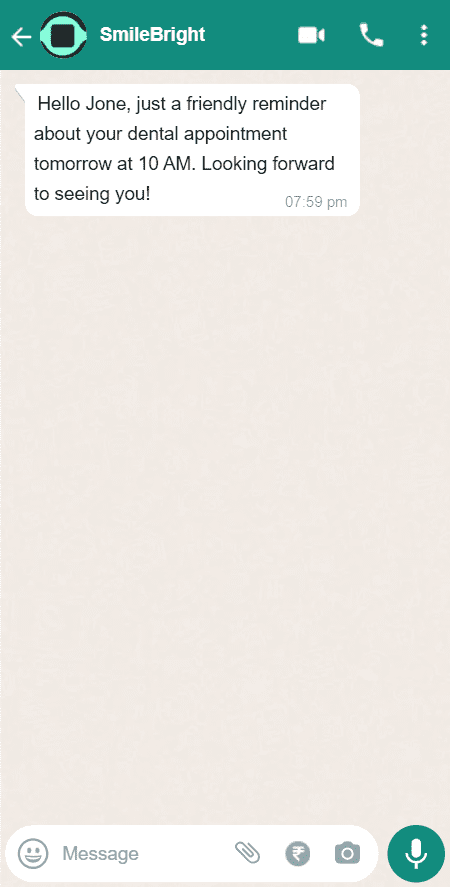
7. Support for Upcoming Diagnostic Appointment
Many diagnostic tests have prerequisites to follow. For example, the diabetes test requires no food intake before 8 hours. Therefore, the healthcare chatbot can send such informative alerts to the patient to ensure a smooth experience for the upcoming diagnostic appointment. It can also guide the whole process, wait time, and more. This way, patients come with a well-prepared mind.
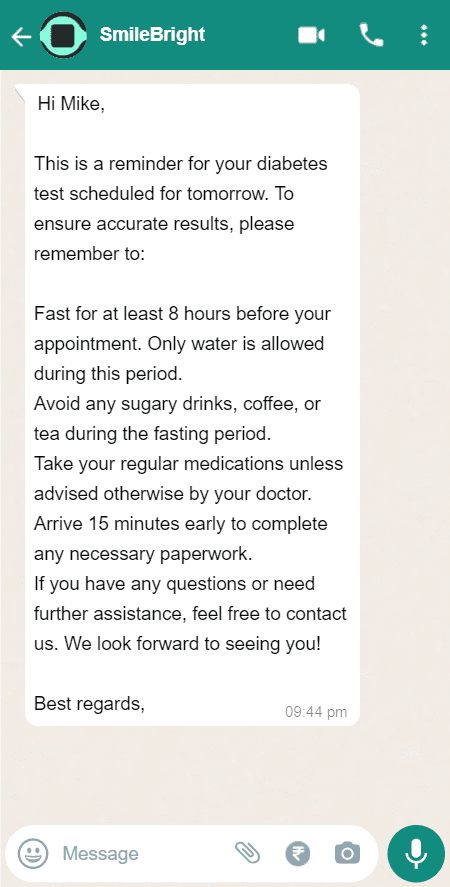
8. Connect with Healthcare Professional
A healthcare chatbot can also schedule calls with healthcare professionals. It can arrange voice or video calls with professionals. Besides that, the chatbot can automatically transfer the patient to any human representative if it cannot address the patient's concerns. This way, patients can always receive the needed care and support.
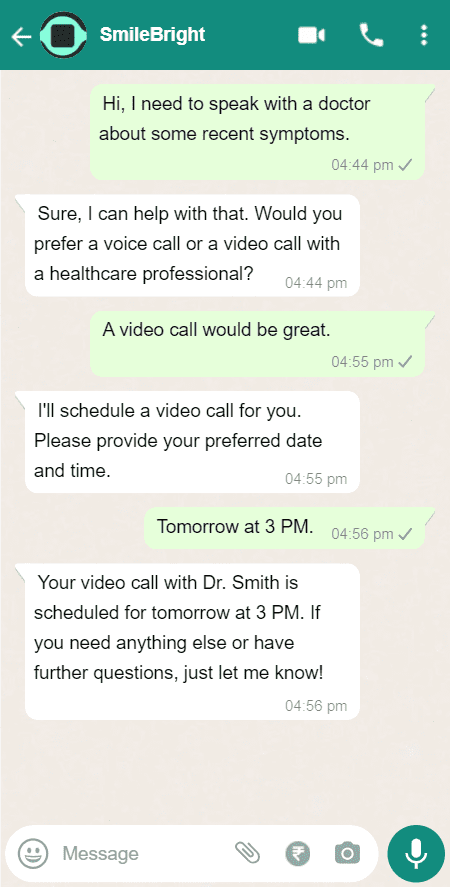
9. Send Friendly Messages
One of the great benefits of chatbots in healthcare is that they are useful for both medical queries and marketing. You can use a healthcare chatbot to send friendly messages to patients. For example, you can send birthday wishes, invite them to an event, and much more. These types of messages make patients feel more valued, which in turn leads to more engagement.

10. Collect Feedback
A healthcare chatbot also provides a convenient way to collect feedback. Many patients are willing to give feedback about the services but don't have time to complete the lengthy process of giving feedback on the website or other platforms. A chatbot provides a convenient way for patients to provide feedback in seconds.

Part 3: Build AI Healthcare Chatbot Without Hassle Using GPTBots
Now that you know the top healthcare chatbot use cases, the next question is how to build your healthcare chatbot. There is no technical rocket science behind creating a chatbot. You only need to choose a reliable chatbot builder platform and follow a click-based approach. That's where GPTBots comes into action.
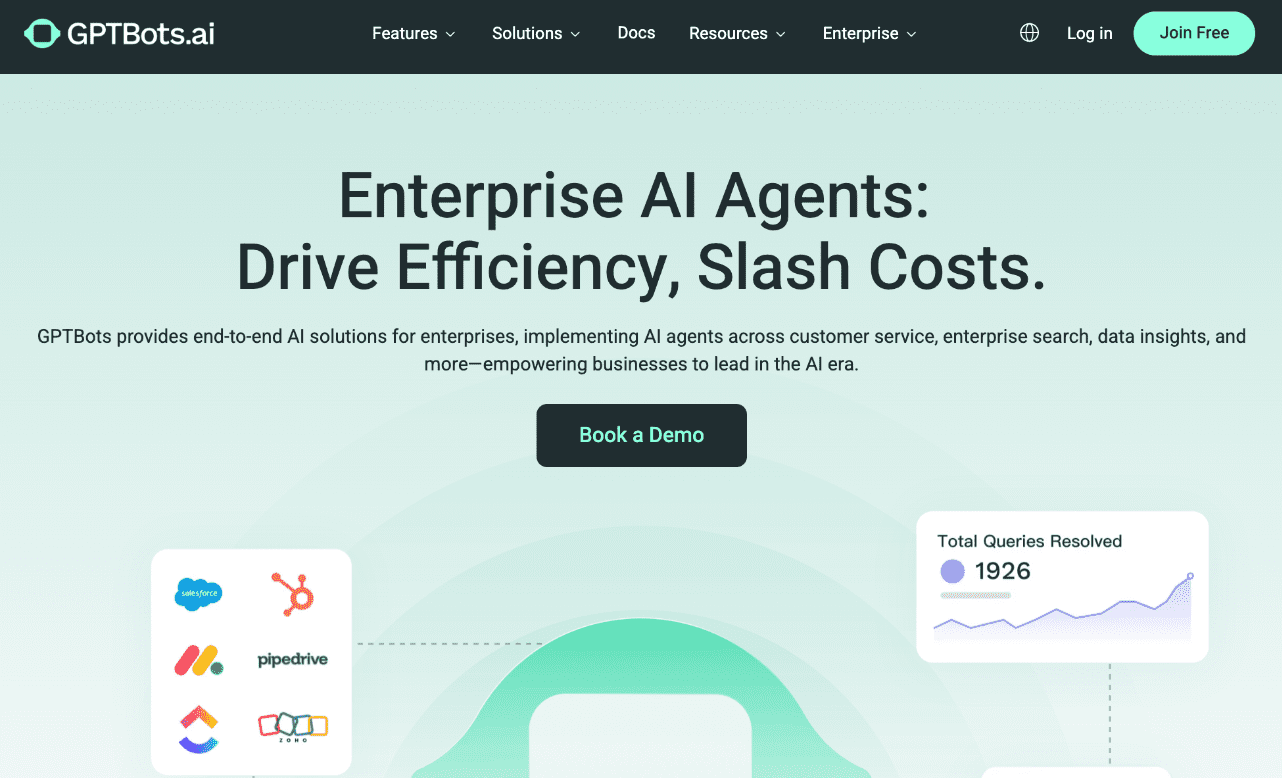
GPTBots is a powerful, no-code platform for building AI healthcare chatbots. It provides a click-based interface to easily create your desired healthcare chatbot. Whether you want a chatbot to schedule appointments or answer FAQs, it can easily create a multifaceted chatbot. Furthermore, it lets you upload your knowledge base to train the bot based on your medical facility data.
The key features of the GPTBots platform are as follows:
- Web-based, no-code platform.
- Knowledge Base to train the bot with your facility PDFs, Docs, spreadsheets, websites, Q&A, etc.
- Support diverse input types, including text, images, videos, audio, and more.
- Prebuilt AI Agent templates to create bots.
- Visual flow-based bot creation.
- Integrate the chatbot with a variety of platforms, including WhatsApp, Discord, Zapier, Slack, etc.
- Easily switch chatbot to human support.
- Flexible access control.
In short, GPTBots makes it simple to build and leverage all the above healthcare chatbot use cases.
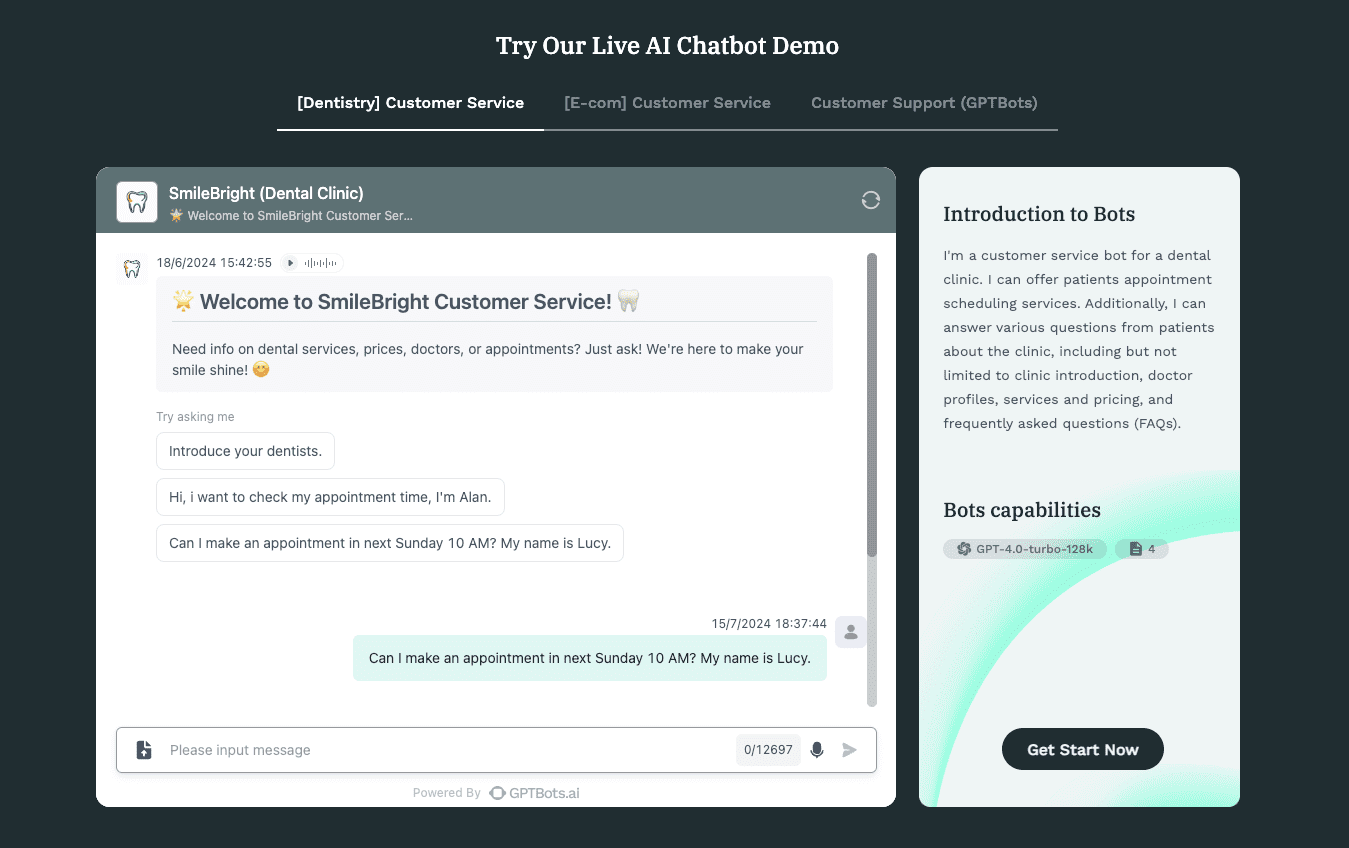
Here are the six simple steps to build an AI healthcare chatbot using GPTBots:
Step 1. Head to the GPTBots.ai website and sign up.
Step 2. Click New Agent > Create from Blank to get started.

Step 3. Set the initial Agent settings, including the preferred LLM model, response length, and others.
In the "Identity Prompt", you have to write the bot's role, tasks, skills, constraints, and other details. Make it as clear as possible to create an excellent bot.
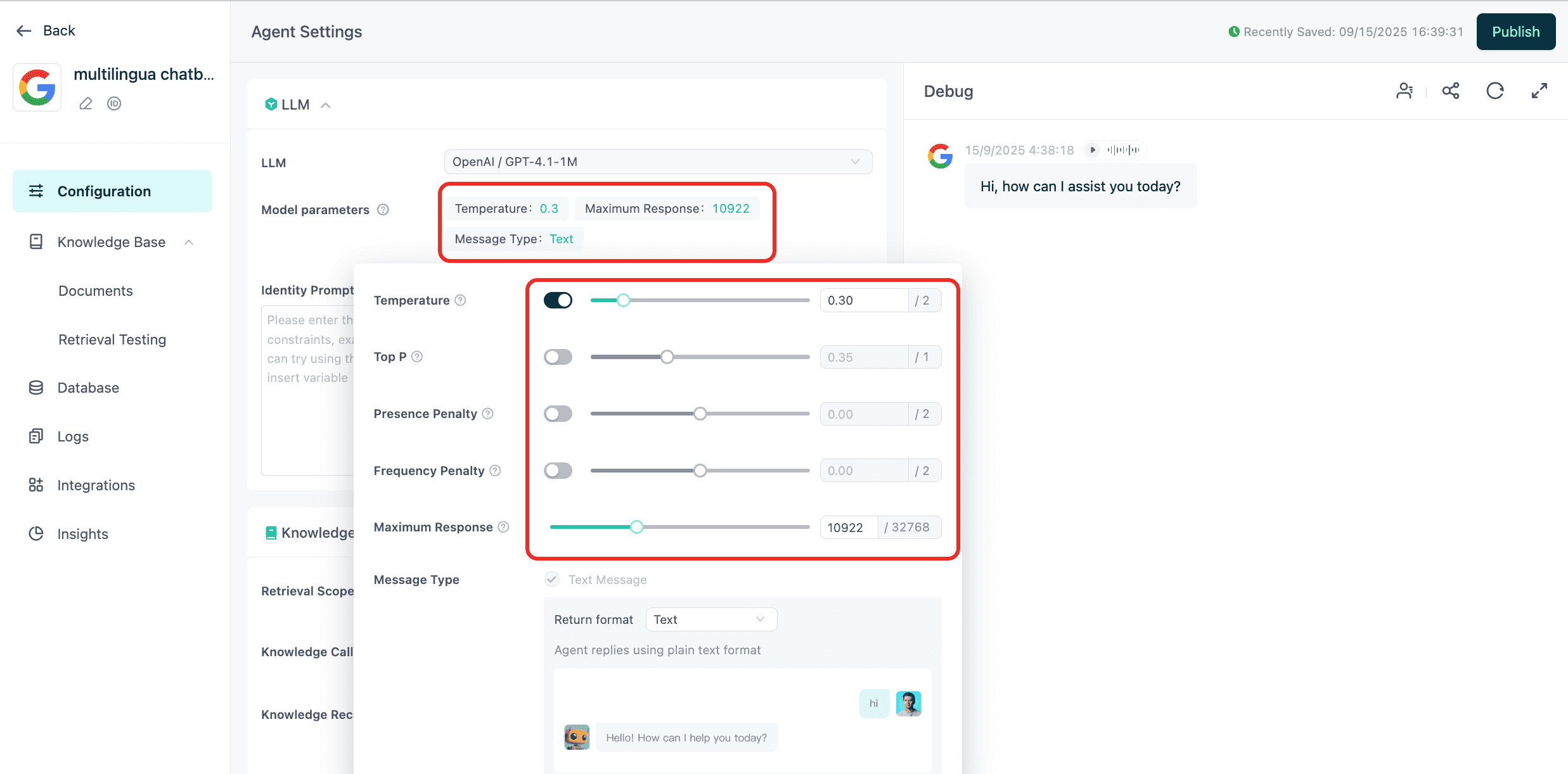
Step 4. Click Knowledge > Documents from the left and upload your documents to train the bot.
Once you have uploaded all the files, use the "Retrieval Test" option to test the bot outputs and edit responses where necessary.
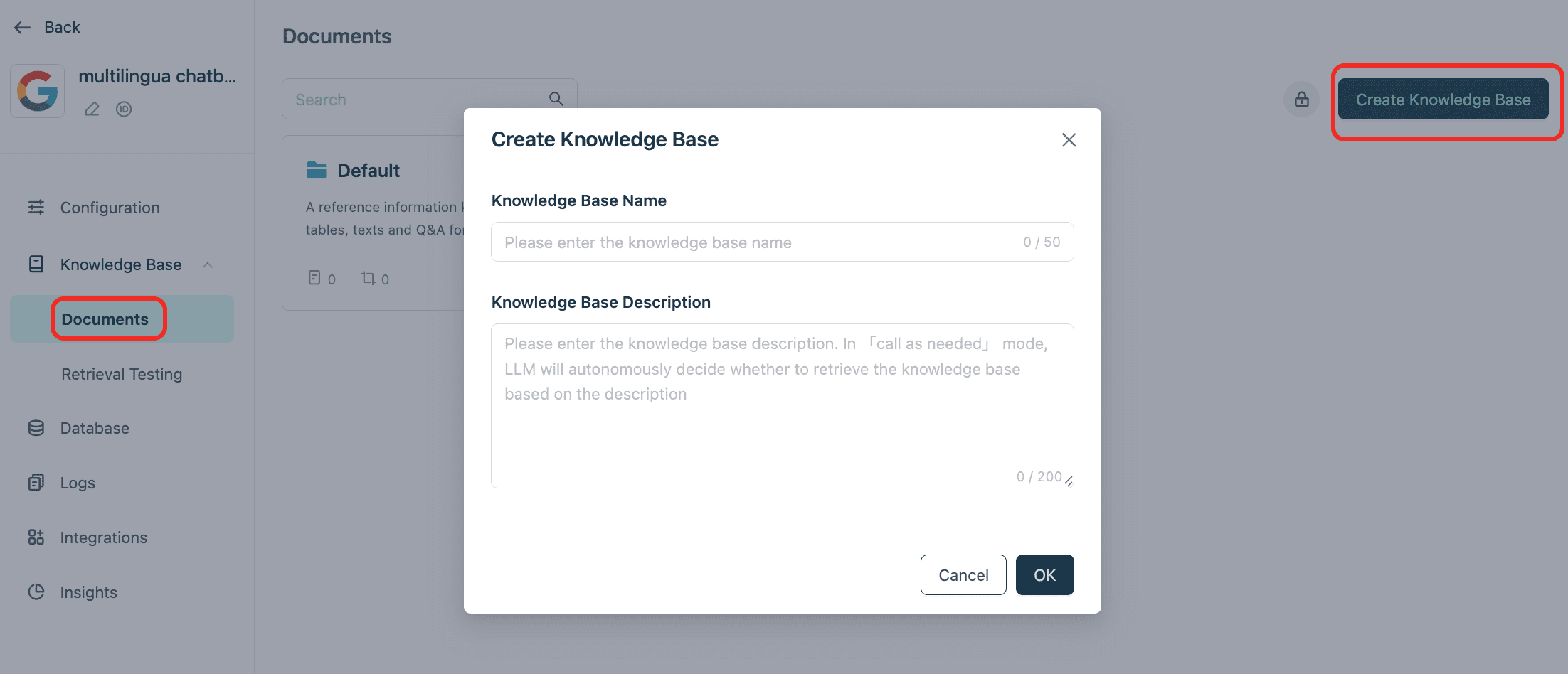
Step 5. Under the Tools module, you can integrate your prepared APIs as tools added to the bot. For example, you can create and add tools to schedule appointments.
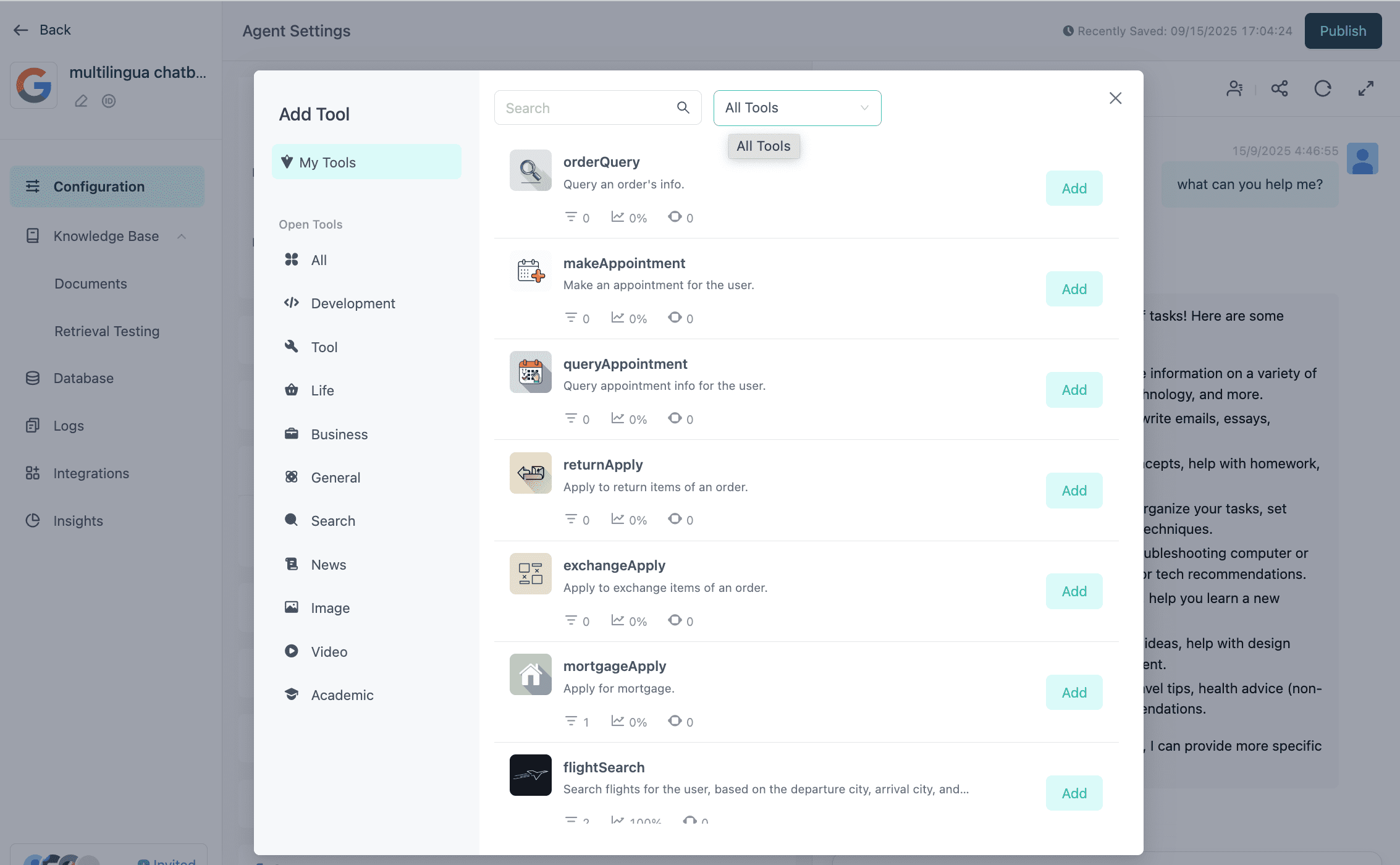
Besides that, GPTBots also have many read-to-use tools that you can integrate to elevate your chatbot capabilities.
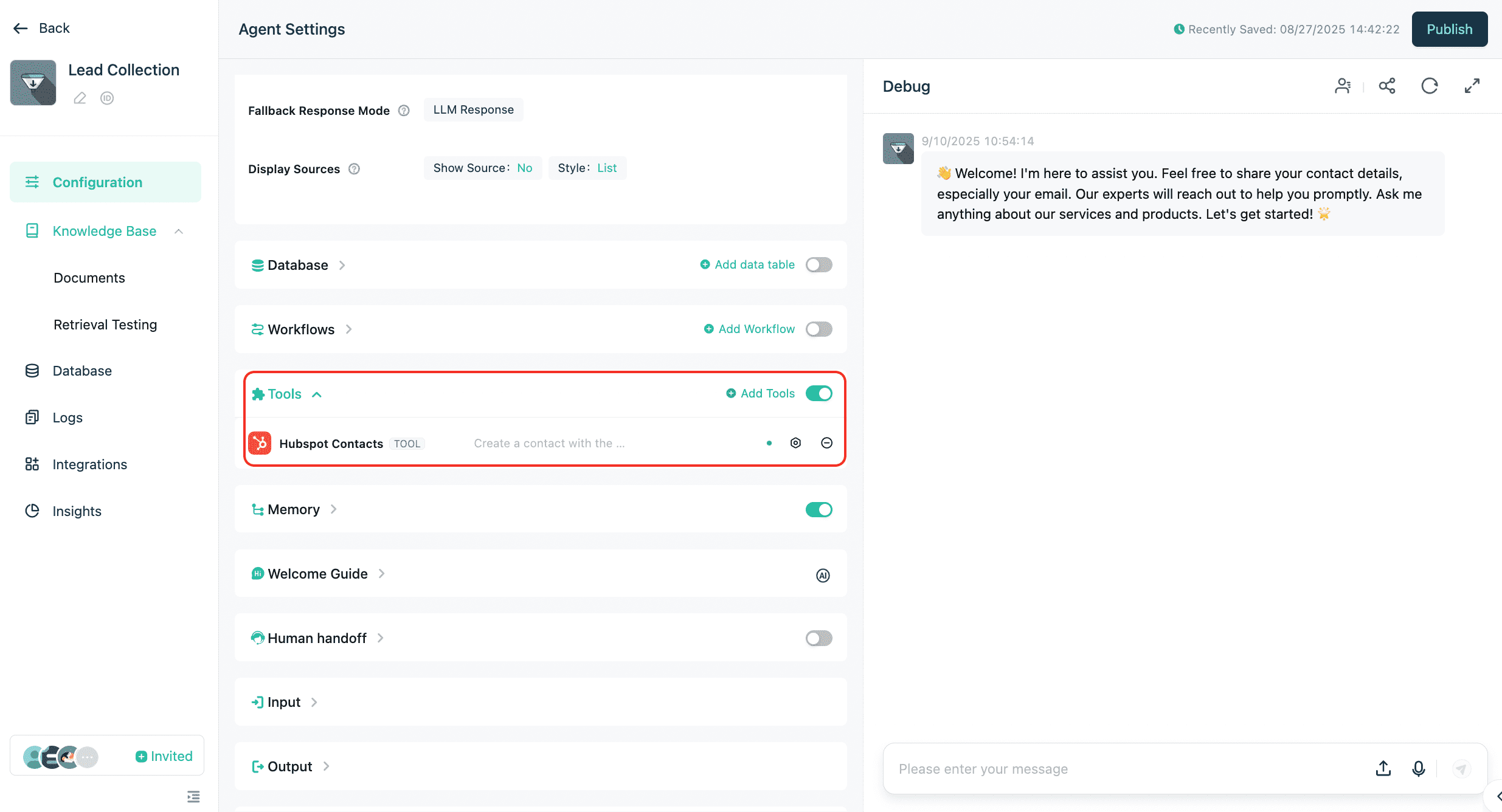
Step 6. Once you have built the AI Agent, you can click "Integrations" from the left sidebar and integrate/launch it in your preferred channel, such as WhatsApp, Discord, iframe, and more.
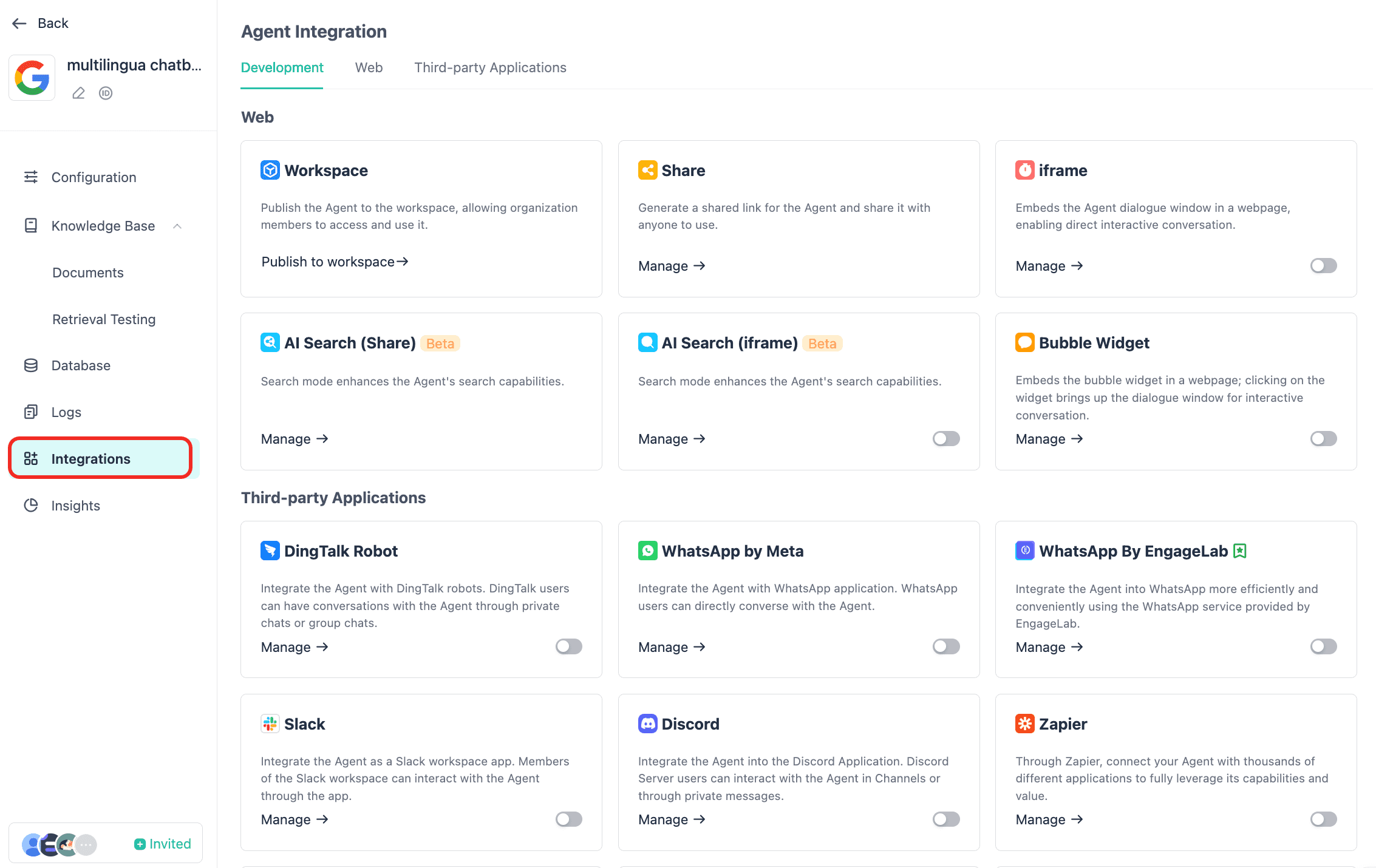
That's it! This way, GPTBots provides a powerful platform for building a highly capable healthcare chatbot.
Conclusion
Healthcare chatbots are a necessity for medical facilities in today's digitalized era. The above healthcare chatbot use cases show how a bot can optimize patients' interactions and streamline operations. In addition, it has become easier than ever to build a customized chatbot with GPTBots' intuitive approach. Therefore, it's time to get smarter and build a full-fledged healthcare chatbot with GPTBots. Sign up with GPTBots and get started!
Discover how GPTBots can simplify and revolutionize your business today.
- How to Make a Discord Bot Without Coding
- How to Create a WhatsApp Bot in 5 Minutes! (Just 3 Steps)
- How to Build a Chatbot for LINE in 5 Minutes: A Detailed Guide
- [100% Working] How to Build an AI Chatbot for Telegram Without Coding
- What Are Slack Bots & How to Create a Slack Bot
- How To Create A Chatbot For Websites: A Complete Guide




